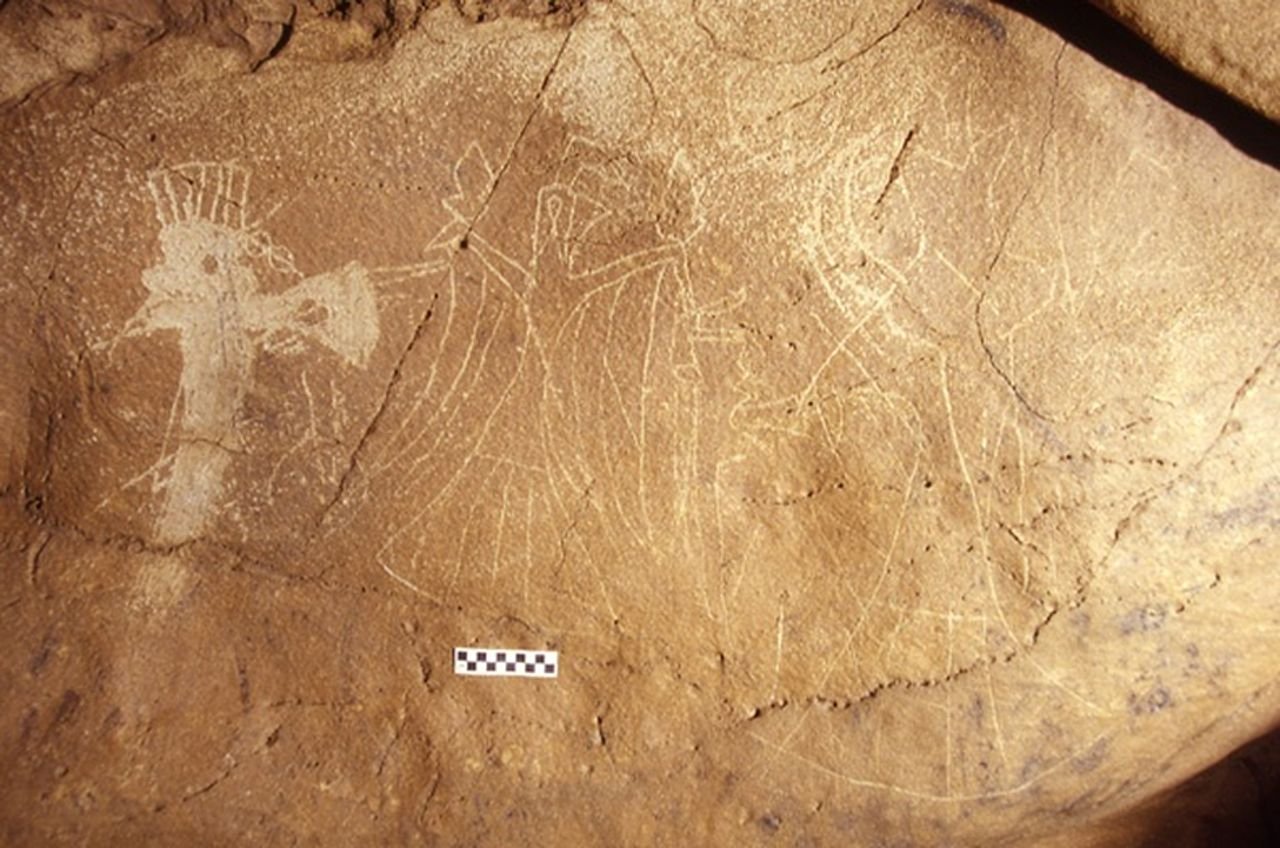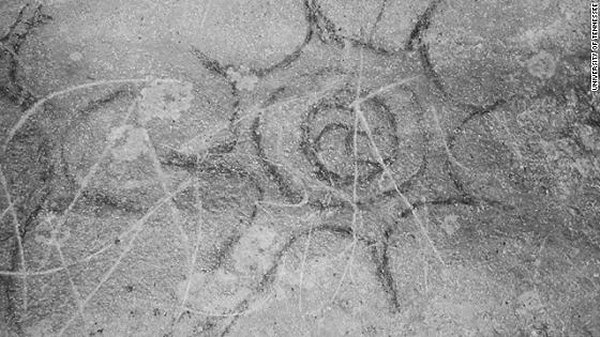MessageToEagle.com – Archaeologists believe these are the oldest known rock carvings in North America. These intriguing depictions of mysterious beings were strategically placed to reveal a cosmological puzzle.
The paintings and carvings have been scattered around the caves and bluff faces of the Cumberland Plateau, a division of the Appalachian Mountains extending from southern West Virginia to northern Alabama.
The rock art – left behind by the ancestors of the Native American nations of the Southeast – was just waiting to be discovered.

Now a group of scientists, led by anthropology professor Jan Simek, at the University of Tennessee, Knoxville have proposed that rock art changed the natural landscape to reflect a three-dimensional universe central to the religion of the prehistoric Mississippian period.
“Our findings provide a window into what Native American societies were like beginning more than 6,000 years ago,” said Simek.

“They tell us that the prehistoric peoples in the Cumberland Plateau, a section of the Appalachian Mountains, used the rather distinctive upland environment to map their conceptual universe onto the natural world in which they lived.”
“What’s part interesting is it spans an area literally from the Kentucky line down into northern Alabama,” Simek said. Most of them are between 500 and 900 years old, but radiocarbon dating indicates one painting of a hunter in east-central Tennessee was laid down 6,000 years ago.
According to Simek, there might be ancient rock art in 400 or 500 of the 9,000 caves recorded in the limestone and sandstone bedrock of Tennessee.
That would make it the oldest representation in North America known to date, he said.
Simek and his team analyzed 44 open- air art sites where the art is exposed to light and 50 cave art sites in the Cumberland Plateau using nondestructive, high-tech tools, such as a high-resolution laser scanner.
Through analysis of the depictions, colors, and spatial organization, they found that the sites mimic the Southeastern native people’s cosmological principles.
“The art sites, predominantly found in caves, feature otherworldly characters, supernatural serpents and dogs that accompanied dead humans on the path of souls,” the scientists wrote in their paper.
The images are largely painted in black, a color associated with death.
“There’s a small cave in the middle part of Tennessee, a very small cave that contains over 400 engraved images that are extraordinary,” Simek said.
“Some of them are tiny — so small that if you didn’t know how to look for them, you would never find them.”
“The cosmological divisions of the universe were mapped onto the physical landscape using the relief of the Cumberland Plateau as a topographic canvas,” said Simek.
The “upper world” included celestial bodies and weather forces personified in mythic characters that exerted influences on the human situation.
Mostly open-air art sites located in high elevations touched by the sun and stars feature these images.
Many of the images are drawn in the color red, which was associated with life.
See also:
Nonhuman ‘Hands’ Found in Prehistoric Rock Art
Famous Aboriginal Rock Art Of Kimberley – Among The Oldest Made By Humans Anywhere In The World
Australia’s Pilbara Rock Art Older Than The Ice Age
“That’s looking into some of the most dramatic parts of the sky, especially in the spring and summer months,” Simek said. “And we know their relationship was such that they paid attention to celestial phenomena, but they also believed in a universe that was layered.”
The “middle world” represented the natural world. A mixture of open air and cave art sites hug the middle of the plateau and feature images of people, plants and animals of mostly secular character.
The “lower world” was characterized by darkness and danger, and was associated with death, transformation and renewal. The art sites, predominantly found in caves, feature otherworldly characters, supernatural serpents and dogs that accompanied dead humans on the path of souls.
The inclusion of creatures such as birds and fish that could cross the three layers represents the belief that the boundaries were permeable.
Many of these images are depicted in the color black, which was associated with death.
“This layered universe was a stage for a variety of actors that included heroes, monsters and creatures that could cross between the levels,” Simek said.
Interestingly, weapons are rarely featured in any of the art sites.
“Very often some of the humans that are depicted outside of caves are doing otherworldly kinds of things,” Simek said.
“Very often, their hands and feet are extended, and they have very elongated digits, as if they’re reaching out of the rock or into the rock.” Many Native Americans believed boundaries between the spirit world and the natural were permeable, and things like rocks, trees and water sources — including caves — “were places those boundaries could be crossed.”
MessageToEagle.com






